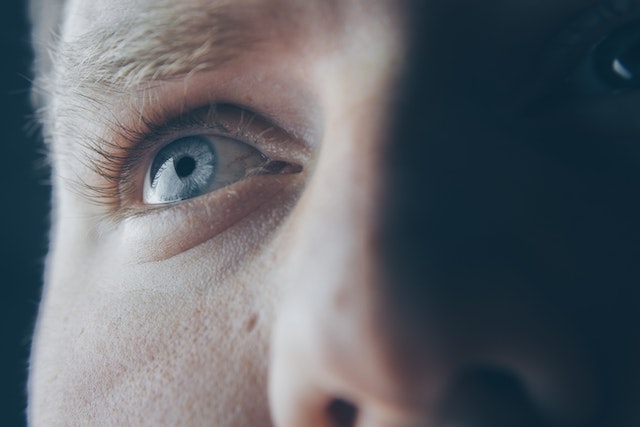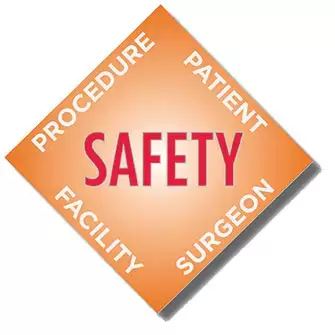|
Blepharoplasty is the surgery of the eyelids. Depending on which lid is being treated it is referred to as upper or lower lid blepharoplasty. It is one of the more commonly performed cosmetic procedures of the face.
Our eyes are considered to be the most important aesthetic units of our face. They are considered as windows to our soul probably because they easily reflect our level of alertness, mood, and sense of well-being. The eyes are also subject to early signs of aging. These changes reveal as extra folds of skin in the upper lid which in some advanced cases can hamper our visual fields. This may be accompanied by loss of definition of the area immediately below eyebrows. The lateral corners of eyes may shift downwards giving rise to a tired appearance. Lower lid undergoes changes as a result of the loss of support of eyelid tissues. They may shift downwards with more display of the white below cornea. There may be baggy swellings of lower lid as a result of protrusion of fat around the eyes. The lower eyelid appears lengthened with an abrupt demarcation between lower lid and cheek. The youthful 'blending' of lower lid and cheek is lost with age. Blepharoplasty benefits those with aging changes of the eyelids. It is also undertaken for those who need an alteration of their prominent epicanthal folds. It can also be undertaken for individuals who desire an extra fold in the upper lid. Evaluation for blepharoplasty begins with a preoperative consultation when a patient indicates her concerns to the physician. Patients should come prepared to reveal details of the previous treatment of the eyes (for example, LASIK, use of contact lens) and systemic illnesses. The physician suggests treatment options based on changes present in the eyelids and neighboring structures. A consultation with an ophthalmologist is also arranged. The patient is advised to stop all forms of herbal supplements and blood thinners for two weeks before the scheduled procedure. Isolated blepharoplasty of the upper lid is usually carried out under local anesthesia with sedation. More extensive procedures involving the lower lid may necessitate general anesthesia for the comfort of the patient. The choice of anesthesia is decided in consultation with the anesthetist. Patient recovery is usually rapid and she can return home the same day or the next. Sutures are pulled out by the end of the first week. Swelling starts to subside after the first 36 hours. If the surgery involved a number of steps, the swelling may take longer to subside. Patients are usually presentable at the end of second to the third week. When properly executed, blepharoplasty is one of the most gratifying procedures in cosmetic surgery. It gives rise to alert and youthful looking eyes. To learn more about other facial plastic surgery procedures, click here. In case of any doubts, we would be glad to hear from you.
Comments are closed.
|
AuthorI like to keep it simple. CategoriesArchives
June 2024
Categories |
- Home
-
Cosmetic
- Fat grafting
- Swellings and moles
- Scar revision
- Leukoderma (Melanocyte transfer)
- Hair transplant
- Facial rejuvenation procedures
- Nose job (Rhinoplasty)
- Cleft lip nose correction
- Ear (Otoplasty)
- Lip reduction
- Breast augmentation
- Breast reduction
- Tuberous breasts
- Axillary breasts
- Gynecomastia
- Liposuction
- Brachioplasty (Arm contouring)
- Abdominoplasty (Tummy tuck)
- Female genital rejuvenation
-
Reconstructive
- Contact
- Blog
- Home
-
Cosmetic
- Fat grafting
- Swellings and moles
- Scar revision
- Leukoderma (Melanocyte transfer)
- Hair transplant
- Facial rejuvenation procedures
- Nose job (Rhinoplasty)
- Cleft lip nose correction
- Ear (Otoplasty)
- Lip reduction
- Breast augmentation
- Breast reduction
- Tuberous breasts
- Axillary breasts
- Gynecomastia
- Liposuction
- Brachioplasty (Arm contouring)
- Abdominoplasty (Tummy tuck)
- Female genital rejuvenation
-
Reconstructive
- Contact
- Blog
You can leave us a comment using the contact form below.
We shall get back to you at the earliest.
We shall get back to you at the earliest.
Links
- Face procedures | Rhinoplasty, Otoplasty, Lip reduction, Fat grafting
- Body procedures | Gynecomastia , Breast reduction, Abdominoplasty, Brachioplasty, Liposuction
- Skin procedures | Scar revision, Moles, Leukoderma surgery
Let's be friends !
Follow us at Facebook and Twitter.
Follow us at Facebook and Twitter.
© 2024 Amicus Clinic (Plastic Surgery Centre, Trivandrum). All rights reserved.

 RSS Feed
RSS Feed



